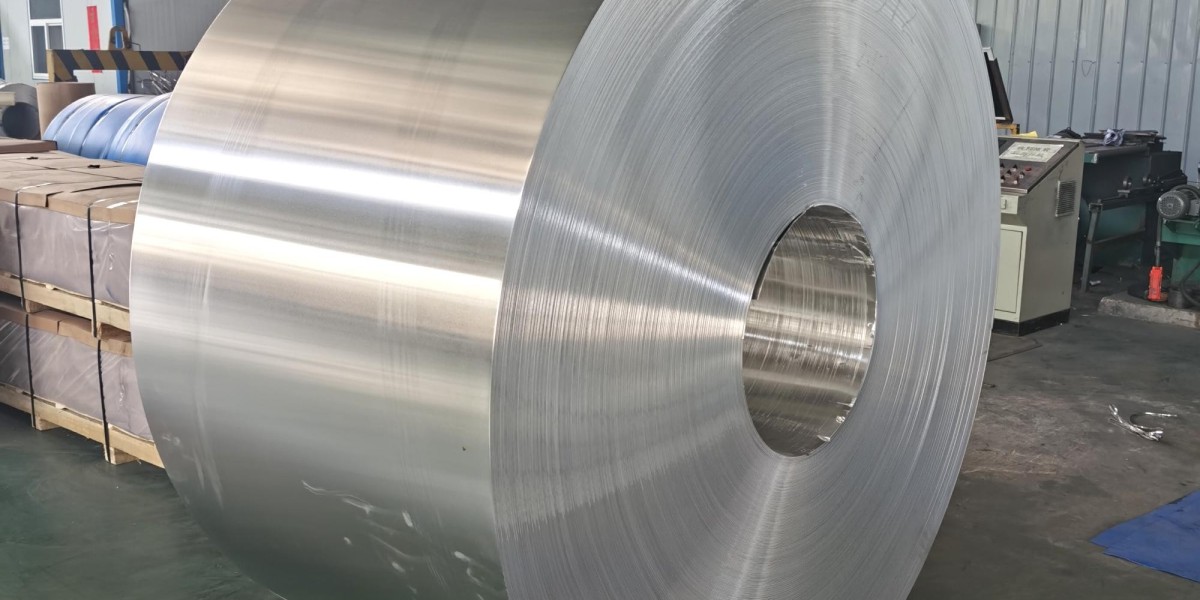What Is 5052 h32 Aluminum Coil?
5052 H32 aluminum coil is an alloy composed primarily of aluminum, magnesium and chromium. It has a tensile strength range of 210-230 MPa and a yield strength of 150 MPa. The elongation is about 10-12%, indicating the percentage of the material that can be stretched to its original length before breaking. Generally, the hardness of the alloy is around 60 on the Brinell scale, which is greater than that of 1060 aluminum coil.
5052 H32 aluminum coil has a density of 2.68 g/cm3 and a melting point of 607°C. It has good thermal conductivity, with a thermal conductivity of about 138 W/mK. It also has excellent electrical conductivity, with a conductivity of about 40-59% of the International Annealed Copper Standard (IACS). In addition, 5052 H32 aluminum coil is highly resistant to corrosion, especially in salt water environments. In this article, we will introduce you to the production process of 5052 H32 aluminum coil, its main applications and how it differs from other alloys.
How Is 5052 h32 Aluminum Coil Manufactured?
The process of producing 5052 H32 aluminum coil may vary due to the manufacturing process of different manufacturers, but the general production process is as follows:
Step 1 Casting: The process begins with casting molten aluminum into large ingots. These ingots are usually manufactured using continuous casting methods to ensure consistent quality.
Step 2 Heating And Rolling: The ingot is heated in a furnace to a specific temperature range to increase its ductility. After heating, the ingot is rolled between large rollers to reduce its thickness and form it into long sheets called coils.
Step 3 Annealing: The coil is then subjected to an annealing process, heating and then cooling slowly. This process removes any internal stress in the material and improves its mechanical properties.
Step 4 Cold Rolling: The annealed coil is cold rolled between sets of rolls to achieve the desired thickness and smooth surface finish. This process also increases the strength and hardness of the aluminum.
Step 5 Intermediate Annealing: Depending on the required specifications, intermediate annealing can be performed during cold rolling. It helps maintain the desired mechanical properties and prevents the material from cracking or tearing.
Step 6 Final Annealing And Finishing: Once the desired thickness is achieved, the coil undergoes a final annealing process to further improve its mechanical properties. They are then trimmed and cut to specific widths to create individual coils for various applications. In addition, if you want to do surface treatment on the aluminum coil, Yongsheng will provide you with various treatment methods such as polishing, coating, anodizing, mirror surface, embossing, lattice, etc., and your satisfaction is guaranteed.
Step 7 Packaging And Storage: The finished 5052 H32 aluminum coils are carefully packaged to prevent damage during transportation. Yongsheng Aluminum usually uses moisture-proof cotton + moisture-proof paper + plastic cloth + stretch film + thickened plastic skin packaging to package aluminum coils to ensure that the finished product is intact.
What Is The Use Of 5052 h32 Aluminum Coil?
Marine industry: The marine industry uses 5052 H32 aluminum coils extensively for hulls, decks, marine equipment and fittings, including fuel tanks, piping systems, railing systems, steps, walkways, hatches, gangways, boat trailers and more. In the offshore industry, 5052 H32 aluminum coil is also used in the construction of platforms, drilling rigs and other offshore structures. The high corrosion resistance of this alloy can withstand salt water and harsh environmental conditions.
Automotive industry: 5052 H32 aluminium coils are used in the automotive industry for body panels, insulated fuel tanks, heat exchangers and more. Many car manufacturers now use 5052 H32 aluminium coils to make body panels for their vehicles. For example, the Tesla Model S uses aluminium body panels made from 5052 H32 aluminium, which contributes to its lightweight design.
Construction Industry: 5052H32 aluminum coils are used in a variety of applications in the construction industry, including roofing, siding, building exteriors, window frames, doors, structural components, and HVAC systems. Their corrosion resistance, light weight and durability help improve reliability and longevity in a variety of construction applications.
Electronics industry: Due to its special properties, 5052H32 aluminum coil has many applications in the electronics industry, including printed circuit boards (PCBs); heat sinks; housings and enclosures, such as computer cases; connectors and terminals; radio frequency (RF) shielding, etc. . It is worth noting that the specific use of 5052H32 aluminum coil in the electronics industry may vary depending on the application, design requirements and technological advancement. However, various electronic components and assemblies in industries such as consumer electronics, telecommunications, automotive electronics and industrial automation rely heavily on the properties of this alloy.
Other Industries: Aluminum coils (including Aluminum 5052 H32) can also be used in packaging (e.g., cans and containers), aerospace, chemical processing equipment (e.g., tanks and piping), furniture and appliances, and signage and advertising.
How Is Aluminum 5052 h32 Coil Different From Other Alloys?
5052 vs 1060 aluminum coil
In terms of composition, 5052 aluminum coil is an alloy with magnesium as the main alloying element, while 1060 aluminum coil is pure aluminum alloy. This difference in composition leads to variations in its mechanical properties. 5052 aluminum coil has higher strength and better corrosion resistance than 1060 aluminum coil, but 1060 aluminum coil is more ductile and easier to form. In addition, 5052 aluminum coil has a higher density and slightly lower melting point than 1060 aluminum coil. Likewise, both alloys have excellent corrosion resistance, but 5052 Aluminum Coil has higher resistance to salt water and marine environments.
In terms of its main application, 5052 aluminum coils are generally used in industries such as transportation (such as auto parts, ship parts), construction (roofs, exterior walls) and electrical manufacturing; 1060 aluminum coils are mainly used in industries with higher ductility and formability. Strong industries, such as signs, lighting fixtures, reflectors and general sheet metal processing and other fields.
5052 vs 5083 aluminum coil
From the perspective of composition, 5052 aluminum coils and 5083 aluminum coils belong to the 5000 series aluminum coils. 5083 aluminum coil contains higher content of magnesium, manganese and chromium, so it is stronger and more corrosion resistant than 5052 aluminum. In terms of mechanical properties, 5052 aluminum coils are easier to process and bend. In contrast, 5083 aluminum coils have higher strength and resistance to stress corrosion cracking. The similarities: Both alloys have similar densities and melting points, making them highly resistant to corrosion in a variety of environments, including marine and industrial.
Primary applications for 5052 aluminum coil include marine, automotive, and general sheet metal fabrication where moderate strength and formability are required. It is commonly used in fuel tanks, body panels and building components. While 5083 aluminum coils are mainly used in marine and offshore structures, such as hulls, shipbuilding and oil rig components.
YSA has more than 20 years of experience, integrating R&D, production and sales, and the factory direct sales model, all products are ex-factory prices, which has great advantages. We can help you choose the most suitable aluminum alloy, protect the interests of both parties in many ways, and serve as a long-term partner to facilitate future purchases.







